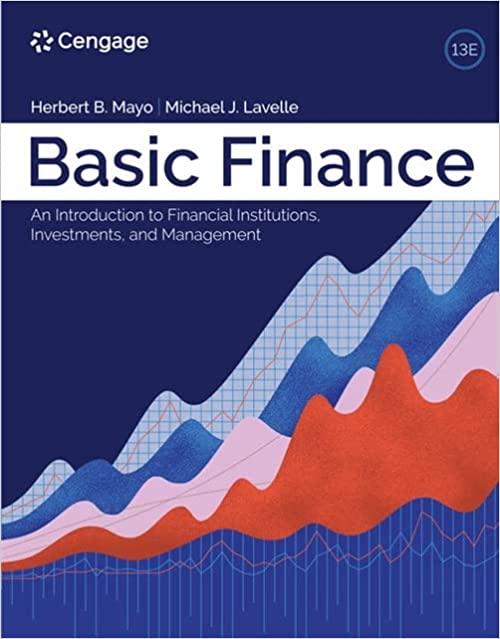Question
Question 1 On March 28, 2008, Toyota Motor Credit Corporation (TMCC), a subsidiary of Toyota Motor, offered some securities for sale to the public. Under
Question 1
On March 28, 2008, Toyota Motor Credit Corporation (TMCC), a subsidiary of Toyota Motor, offered some securities for sale to the public. Under the terms of the deal, TMCC promised to repay the owner of one of these securities $100,000 on March 28, 2038, but investors would receive nothing until then. Investors paid TMCC $24,099 for each of these securities; so they gave up $24,099 on March 28, 2008, for the promise of a $100,000 payment 30 years later.
1a. Why would TMCC be willing to accept such a small amount today ($24,099) in exchange for a promise to repay about four times that amount ($100,000) in the future?
1b. Would you be willing to pay $24,099 today in exchange for $100,000 in 30 years? What would be the key considerations in answering yes or no?
1c. Suppose that when TMCC offered the security for $24,099, the U.S. Treasury had offered essentially identical security. Do you think it would have had a higher or lower price? Why?
Question 2
Tri-State Megabucks Lottery advertises a $10 million grand prize. The winner receives $500,000 today and 19 annual payments of $500,000. A lump-sum option of $5 million payable immediately is also available.
2a. Suppose you won the lottery, what factors should you take into account in deciding whether you should take the annuity option or the lump-sum option?
2b. If there is another annuity option with 10 annual payments, how much will the winner receive? Why? (Hint: calculate the discount rate first by assuming the annuity of $500,000 has a present value equal to $5 million)
Question 3
3a. Suppose two athletes sign 10-year contracts for $80 million. In one case, we're told that the $80 million will be paid in 10 equal installments. In the other case, we're told that the $80 million will be paid in 10 installments, but the installments will increase by 5% per year. Who got the better deal? Why?
3b. You have two options: From option A, you will receive $200 for eight quarters starting from the end of the first quarter. From option B, you will receive $195 for eight quarters starting from the beginning of the first quarter. If the interest rate is 4% compounded quarterly, which one has a higher present value today?
3c. You have two options: From option C, you will receive a perpetuity of $300 every quarter starting from the end of the first year. From option D, you will receive $3,200 for three quarters starting from the end of the first quarter. If the interest rate is 10% compounded quarterly, which one has a higher present value today?
Questions 4
4a. What do you need to know for bond valuation? How can you determine the bonds' value?
4b. What is the relationship between the coupon rate and the YTM for bonds selling at a price higher than the face value? What if the bonds are selling at a price lower than the face value? Why we can identify such relationships?
4c. Are there any circumstances under which an investor might be more concerned about the nominal return than the real return?
Question 5
5a. What do you need to know for stock valuation? How can you determine the stocks' value?
5b. What is the assumption of the dividend growth model? Comment on the reasonableness of the assumptions of the dividend growth model.
5c. What are the two components of the total return on a share of stock? Which one do you think is typically larger?
Question 6
6a. What is NPV? Why NPV criterion is superior to others?
6b. What is IRR? What is the relationship between IRR and NPV? Give one example in which the two criteria conflict.
6c. What is the profitability index? What is the relationship between the profitability index and NPV? Give one example in which the two criteria conflict.
Step by Step Solution
There are 3 Steps involved in it
Step: 1

Get Instant Access to Expert-Tailored Solutions
See step-by-step solutions with expert insights and AI powered tools for academic success
Step: 2

Step: 3

Ace Your Homework with AI
Get the answers you need in no time with our AI-driven, step-by-step assistance
Get Started


